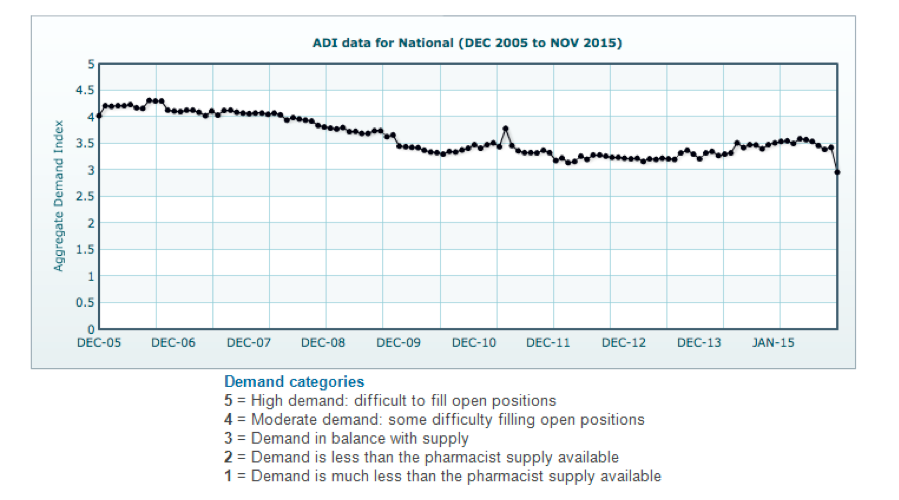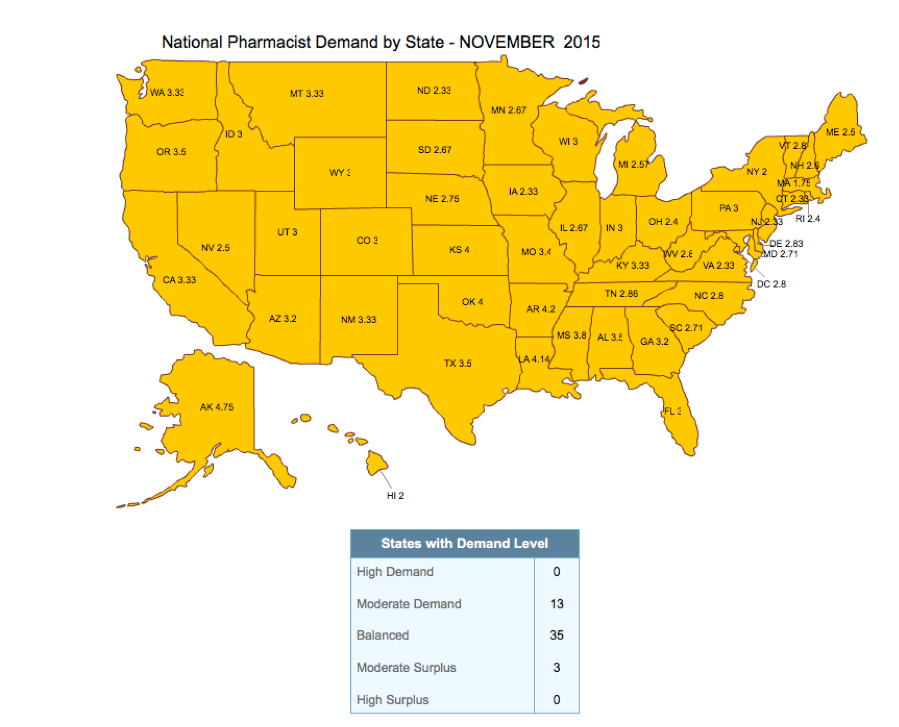Article
Pharmacist Supply Surpassing Demand, Job Data Suggest
Author(s):
The number of pharmacists looking for work currently exceeds the number of pharmacist jobs available, according to new data compiled by the Pharmacy Workforce Center.
The number of pharmacists looking for work currently exceeds the number of pharmacist jobs available, according to new data compiled by the Pharmacy Workforce Center (PWC).
According to PWC’s most recently collected data from November 2015, the overall pharmacy Aggregated Demand Index (ADI) is at 2.96, which indicates that the supply of pharmacists has surpassed the amount of jobs available.
For reference, the highest ADI of 5 would indicate that demand for pharmacists is high and open positions are difficult to fill, while the lowest ADI of 1 would indicate that demand for pharmacists is much lower than the available supply.
Meanwhile, an ADI of 3 would indicate that demand for pharmacists is in balance with supply. Of note, the November 2015 data mark the first time in 10 years that the national ADI has been reported below 3.

Source: PWC
In response to commentary about the most recent ADI data, PWC President Douglas Scheckelhoff, MS, FASHP, and Vice President Lynette R. Bradley-Baker, RPh, PhD, told Pharmacy Times, “It is important to note that the ADI reflects the views of employers, and as such, it is an indicator of the demand and supply of pharmacists in the labor market, not an objective gauge or quantification of demand.”
“From month to month, the number of panelists that provide data can vary and there is not always 100% reporting each month. In addition, periodically, there can be changes in the composition of the ADI panelists, as recruitment of new panelists and retention of prior panelists ebbs and flows,” they wrote. “The November 2015 ADI data…reflect some of these variabilities in data reporting and the different perspectives that result from different individuals providing data.”
Different perspectives also help compile state-specific data, which show that the states with the highest demand for pharmacists were Alaska (4.75), Arkansas (4.20), and Louisiana (4.14). On the other end of the spectrum were Massachusetts (1.75), Hawaii and New York (2.0), and Connecticut, Iowa, New Jersey, North Dakota, and Virginia (2.33).

Source: PWC
Scheckelhoff and Dr. Bradley-Baker noted that the ADI doesn’t include every pharmacist employer in the United States, and PWC “welcome(s) additional panelists of pharmacist employers to contribute to the ADI.”





